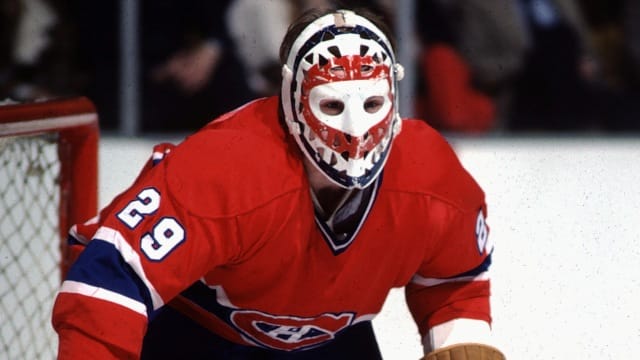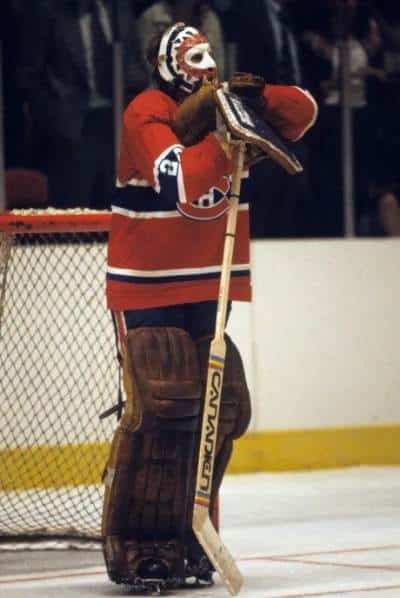Ken Dryden: A national hero and model
Some headlines provoke bigger reactions than others.
I was sitting in my kitchen on Saturday morning reading my phone when I exclaimed, “Oh my God!”
My son asked, “What’s wrong?”
“Ken Dryden died,” I said.
Of course, he had no idea who Ken Dryden was.
I’m sure many Canadians of a certain vintage had a similar visceral reaction when they learned that Dryden had died at age 78 from cancer. It wasn’t widely known that he was sick.
Doing my best Homer Simpson impression of a wise father, I told my son that Dryden holds a special place in the hearts and minds of older Canadians as one of the greatest goalies in history, and that his dad—a goalie as a kid and as a writer—saw him as an idol, hero and even a model.
Dryden was one of the best-loved, most-read and respected hockey players in history. He was like a wise spiritual force who rose above the petty concerns of fortune and fame, slights and fights, pluses and minuses and kept us grounded in how the game can bring out the best in individuals and our country. Part poet and philosopher, he was our hockey bard attuned to the national conscious in an intelligent, dignified and humble way that seems out of style today.
With my son, I immediately went back to the 1972 Summit Series that pitted Canadian NHL players against the best from the Soviet Union for the first time. This was the Cold War era; the series was much bigger than hockey, pitting our way of life against theirs.
At the time, I was a 15-year-old sports obsessed rep-level goalie and junior golfer riddled with self-doubt.
Like most Canadians, I was initially shocked by the Soviet’s skill, speed and discipline, and dismayed by our lack thereof. And, like everyone in this country, I lived and died with every game, hanging on to hope that having hockey in our souls would allow us to adapt and eventually overcome.
Tony Esposito and Dryden had split the goaltending duties, but Dryden got the start in final game of the series on September 28. Game 8 began in Moscow at 1 p.m. Eastern time. The leadership at Catholic Central High School in London, Ontario wisely cancelled classes and put a TV on platform in the west-wing gym for the determining game of the series. It seemed like the entire school population of 1,100 kids was yelling and writhing on the wooden gym floor.
The Soviets led 5-3 going into the third period, but Phil Esposito and Yvan Cournoyer scored to tie it. The Soviets changed to a more defensive style, presumably to preserve the tie, which would have meant they’d win the series on goal deferential.
With time winding down, Team Canada pressed, and Paul Henderson found himself uncovered in front the Soviet net; he took one whack and another. With 34 seconds remaining, Henderson scored the biggest goal in Canadian history. Joyous delirium ensued in the gym and across Canada.
Even though he played for the dreaded Montreal Canadiens—the evil nemesis to my beloved Chicago Black Hawks—Dryden became a model for me as a goalie, particularly for his iconic “What, me worry?” way of resting on his tall goalie stick topped by his blocker and catching glove. That he was 6-foot-4 made him more arresting.
In a fast and chaotic game played on the knife-edge of outright violence, Dryden always seemed unperturbed, which went a long way to his backstopping the Canadiens to six Stanley Cups. (He also won five Vezina trophies as the NHL’s top goalie.) For a nervous netminder like me, he was a great example for staying cool, how to recover after a goal, and how to maintain focus amidst the craziness.
After his retirement after just over seven seasons, he continued to be a model. During my second year as a news agency journalist in 1983, Dryden published The Game, which is still regarded as one of the greatest sports books. I gobbled it up, particularly the inside stuff on his former Montreal teammates. I envied his ability to tell a story, offer perspective, and tie it to grander themes about hockey, Canada and life in general.
In The Game, he describes his approach to playing. It’s one of the best descriptions of an ideal mental state for a goalie, golfer or any athlete that I’ve ever read.
“My conscious mind goes blank. I feel nothing, I hear nothing, my eyes watch the puck, my body moves—like a goalie moves, like I move; I don’t tell it to move or how to move or where, I don’t know it’s moving, I don’t feel it move–yet it moves. And when my eyes watch the puck, I see things I don’t know I’m seeing.”
Dryden went on to write several books, along with becoming a lawyer, an NHL hockey executive, Member of Parliament, cabinet minister, and much more.
Dryden achieved great success in his life, but I don’t think success drove him. I believe that Dryden knew there was a bigger game being played, and it was vital to contribute to the greater good, whether in his family, on teams, in organizations or for his country. He exemplified a man who lived a life of purpose with a keen sense of what was truly important.
As models go for people my son’s age or everyone, they don’t come much better than Ken Dryden.
R.I.P. Ken Dryden
*****
If you’ve ever considered mental game coaching, I’m inviting you to take the opportunity for a FREE 30-minute coaching call.
During this free session, we’ll discuss:
- What’s happening in your game?
- What are your objectives?
- What specifically makes you feel stuck?
- Identify actions and a plan that you help you get unstuck.
This FREE session will show you how to finally start moving forward.
To register for your free session, send an email to tim@oconnorgolf.ca.
Don’t miss your opportunity to get unstuck and develop your feeling of greatness!







